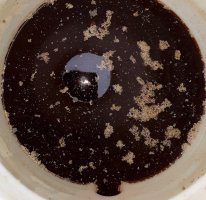Brownyard
Well-Known Member
- Joined
- Aug 19, 2020
- Messages
- 136
- Reaction score
- 64
Went to keg an All Grain BIAB Porter this morning, and noticed this. Looks like an infection to me, but the second pic I took after transferring and leaving the stuff to sit in the bottom, it looked more like spent grains. The FG sample smelled and tasted fine. Dump and clean?






